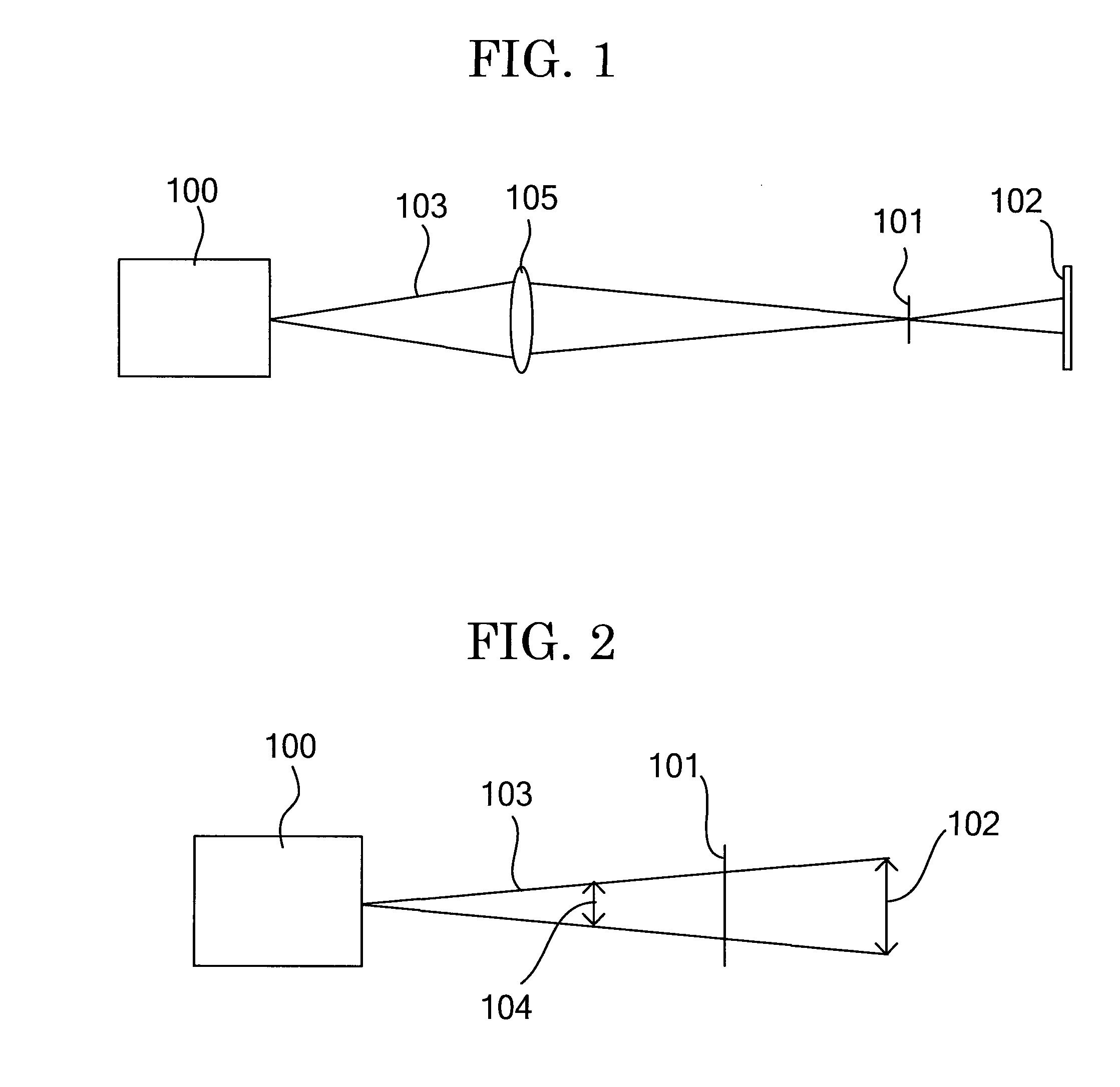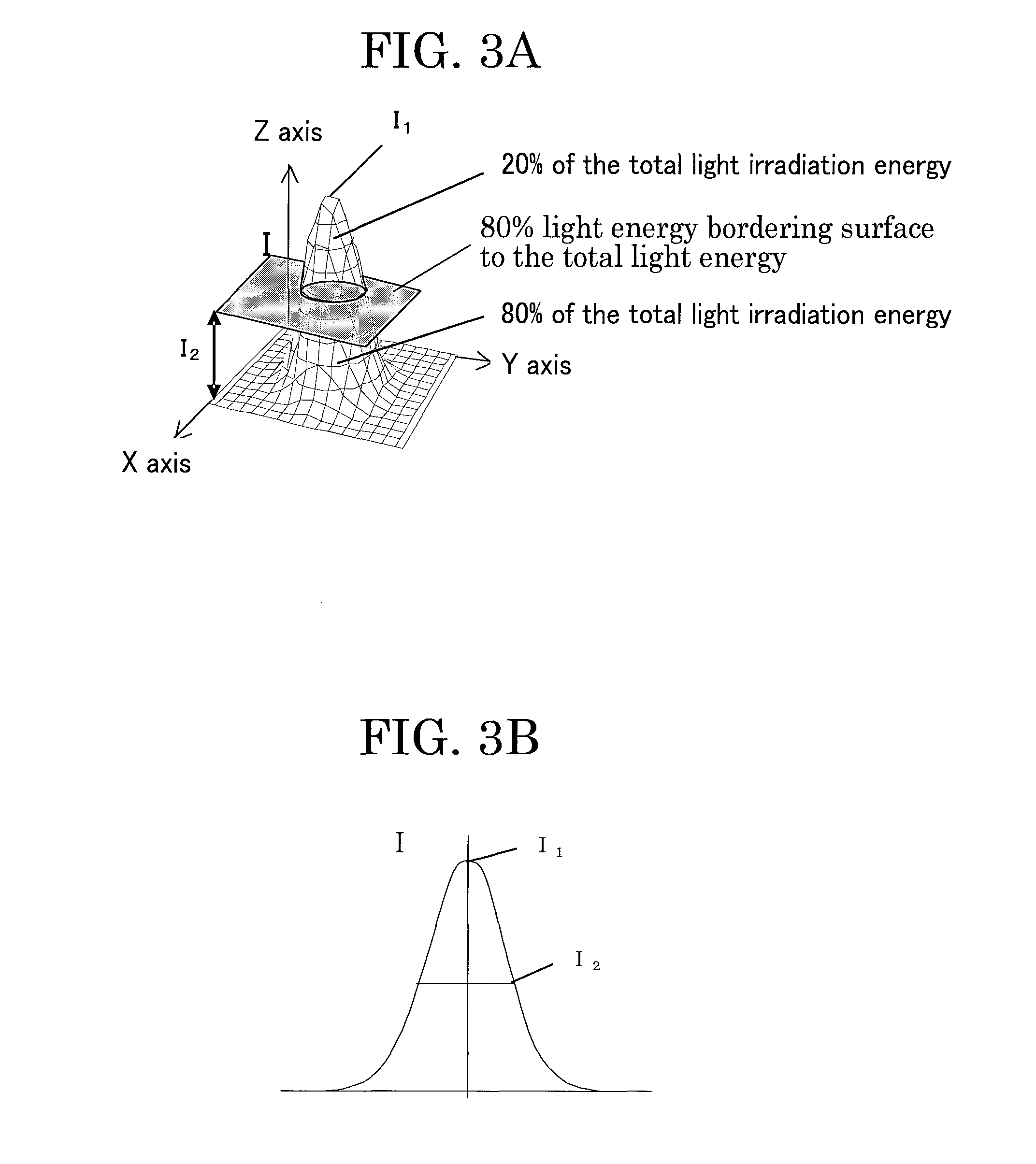Image processing method, and image processor
a technology of image processing and image processor, applied in the field of image processing method and image processor, can solve the problems of insufficient visibility, deformation natural thickening of thermally reversible recording medium, etc., and achieve the effect of shortening the scanning direction of the scanning mirror and shortening the recording tim
- Summary
- Abstract
- Description
- Claims
- Application Information
AI Technical Summary
Benefits of technology
Problems solved by technology
Method used
Image
Examples
production example 1
Preparation of Thermally Reversible Recording Medium
[0442]A thermally reversible recording medium capable of reversibly changing in color tone between a transparent state and a color developed state depending on temperature was prepared as follows.
—Substrate—
[0443]As a substrate, a white turbid polyester film of 125 μm in thickness (TETRON FILM U2L98W, manufactured by TEIJIN DUPONT FILMS JAPAN LTD.) was used.
—Under Layer—
[0444]To 40 parts by mass of water, 30 parts by mass of a styrene-butadiene copolymer (PA-9159, manufactured by Nippon A & L Inc.), 12 parts by mass of a polyvinyl alcohol resin (POVAL PVA103, manufactured by KURARAY Co., Ltd.), and 20 parts by mass of a hollow particle (MICROSPHERE-300, manufactured by Matsumoto Yushi-Seiyaku Co., Ltd.) were added to prepare an under layer coating solution.
[0445]Next, the obtained under layer coating solution was applied over a surface of the substrate using a wire bar, and the applied coating solution was heated at 80° C. for 2 mi...
production example 2
Preparation of Thermally Reversible Recording Medium
[0457]A thermally reversible recording medium capable of reversibly changing in color tone between a transparent state and a color developed state depending on temperature was prepared as follows.
—Substrate—
[0458]As a substrate, a transparent PET film of 175 μm in thickness (LUMILAR 175-T12, manufactured by Toray Industries, Inc.) was used.
—Reversible Thermosensitive Recording Layer (Recording Layer)—
[0459]In a resin solution in which 26 parts by mass of vinyl chloride copolymer (M110, manufactured by ZEON CORPORATION) had been dissolved in 210 parts by mass of methylethylketone, and 3 parts by mass of an organic low-molecular material represented by the following Structural Formula (5) and 7 parts by mass of dococyl behenate were added. A ceramic bead having a diameter of 2 mm was put in a glass bottle, and the prepared solution was poured thereto. The solution was dispersed using a paint shaker (manufactured by Asada Tekko Co., L...
production example 3
Preparation of Thermally Reversible Recording Medium
[0464]A thermally reversible recording medium of Production Example 3 was prepared in the same manner as in Production Example 1 except that 0.03 parts by mass of a photothermal conversion material (EXCOLOR IR-14, manufactured by NIPPON SHOKUBAI CO., LTD.) was added in the preparation of the thermally reversible recording medium.
PUM
| Property | Measurement | Unit |
|---|---|---|
| speed | aaaaa | aaaaa |
| speed | aaaaa | aaaaa |
| diameter | aaaaa | aaaaa |
Abstract
Description
Claims
Application Information
 Login to View More
Login to View More - R&D
- Intellectual Property
- Life Sciences
- Materials
- Tech Scout
- Unparalleled Data Quality
- Higher Quality Content
- 60% Fewer Hallucinations
Browse by: Latest US Patents, China's latest patents, Technical Efficacy Thesaurus, Application Domain, Technology Topic, Popular Technical Reports.
© 2025 PatSnap. All rights reserved.Legal|Privacy policy|Modern Slavery Act Transparency Statement|Sitemap|About US| Contact US: help@patsnap.com



